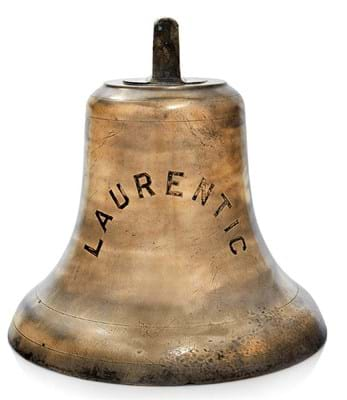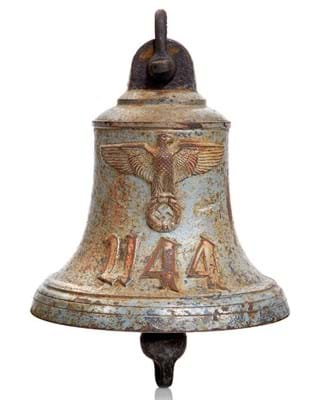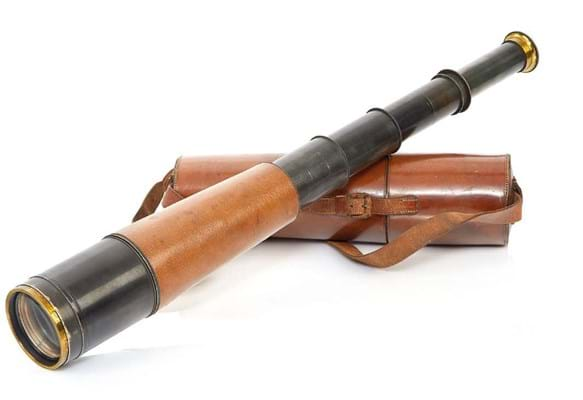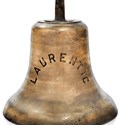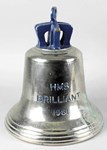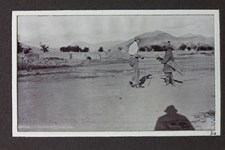The main ship’s bell from the RMS Laurentic c.1908 sold at low estimate for £10,000 to an Irish institution.
In the Great War she maintained passenger services but was also registered as an auxiliary cruiser. On January 23, 1917, she left port in fine but bitterly cold weather.
About an hour later she struck two mines laid by U-80 in Lough Swilly in Donegal, Ireland, and sank in just 45 minutes.
It later transpired she was carrying a cargo of 3211 gold bars, then valued in excess of £5m – over £390m today. All but 25 of these were subsequently raised by the Royal Navy in the 1920s and a further three by a private company in 1934 – the remaining 22 are still unaccounted for.
The wreck was bought for £100 in 1969 by hobby diver Ray Cossum who, in 1979, raised this bell and sold it to the Bembridge Maritime Museum in 1993.
Second World War survivor
A bell from a German Second World War vessel, U-44, 1939, sold for £11,000 to a UK private collector.
Such bells are scarce. “I’ve been doing this job for 20-something years,” said Miller, “but I’ve never seen before, let alone handled, a Second World War U-boat bell.”
U-44 was sunk on her second mission on March 13, 1940, after hitting a British mine off Holland and going down with all 47 hands.
Bells on U-boats were “a sort of hung-over naval tradition with no real practical purpose,” said Miller. They were regularly fitted in 1914-18 in the era before sonar equipment. By 1939 the manufacture of the ornate but obsolete U-boat bells stopped and indeed many would have been melted down later in the war due to metal shortages.
This bell emerged during a serendipitous voyage of Miller’s own, when, in a single road trip to consignors in Chester, Harrogate and Hull, he picked up the bell, a U-boat model and a telescope believed to have belonged to German admiral Karl Dönitz.
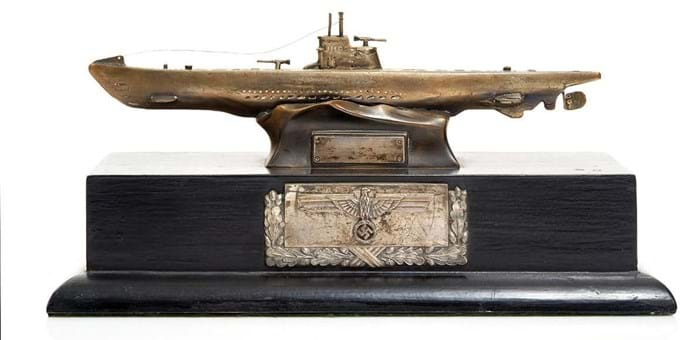
This 13½in (34.5cm) long white metal presentation model of U192 sold for £3200 (estimate £1000-1500) at Charles Miller’s sale, again to a UK private collector. The recipient’s name on the base is unreadable. On her first mission in May 1943, she was depth-charged and sunk by the corvette HMS Loosestrife with the loss of all 55 hands.
War souvenir
The telescope sold at a mid-estimate £1300 to a UK private collector. It was given to the vendor in the early 1950s by a Royal Navy officer who recovered it from Bremerhaven at the close of the Second World War.
Dönitz (1891-1980) succeeded Erich Raeder as Commander-in-Chief of the Kriegsmarine on January 30, 1943 and quickly developed the infamous ‘wolfpacks’ of submarines used to pursue allied convoys.
This was met with considerable initial success and allied losses rocketed until new methods of detection – aided by the breaking of naval enigma code – redressed the balance.
Miller says Zeiss confirms that this instrument was made from 1900-06 so may have been given to Dönitz when he was commissioned as an acting sub-lieutenant in 1913.


